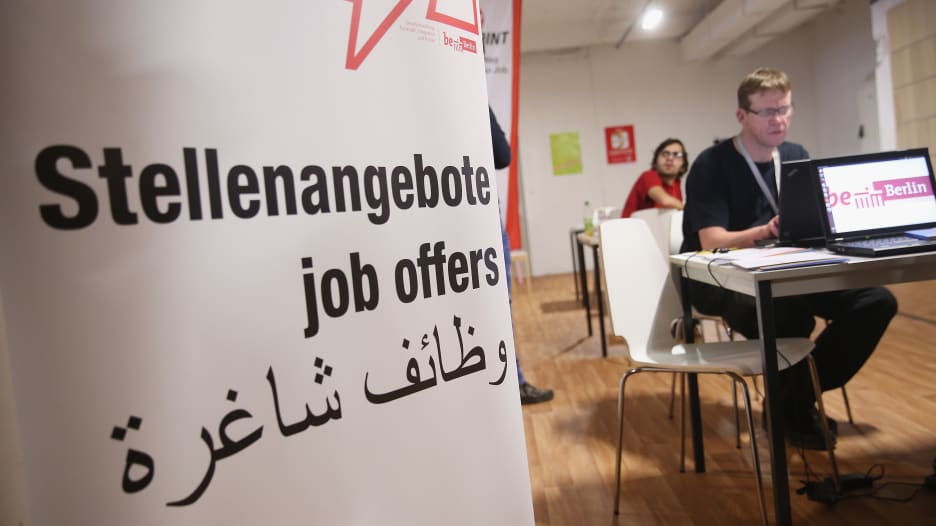نشر هذا المقال بالتعاون مع موقع التوظيف الإلكتروني بيت.كوم
دبي، الإمارات العربية المتحدة (CNN) -- إنّ الالتحاق في برامج تدريبيّة أصبح أمراً شائعاً بين المهنيّين، إذ أثبتت هذه البرامج فائدتها للباحثين عن عمل وأصحاب العمل على حد سواء.
ولكن، كيف يعثر المهنيّون في الشرق الأوسط على هذه الفرص التدريبيّة؟ هل تتوفر هذه الفرص في المنطقة؟ وماذا يستفيد الباحثون عن عمل من البرامج التدريبية التي تقدّمها الشركات؟ في المقابل، هل تحقق هذه البرامج فوائد للشركات؟ وما هو دور الجامعات في توفير مثل هذه الفرص للخريجين الجُدد؟
في استبيان بعنوان "فرص التدريب في الشرق الأوسط وشمال أفريقيا"، يسلط الضوء على دور التدريب في عملية التطوير الوظيفي. ويظهر الاستبيان بأن مواقع التوظيف عبر الإنترنت تعتبر أفضل وسيلة للعثور على فرص التدريب المناسبة (بحسب 62٪ من المجيبين).
وأكد أكثر من نصف المجيبين (55٪) على أن فرص التدريب متوفرة على نطاق واسع في منطقة الشرق الأوسط، حيث تتيح هذه الفرص للمتدربين فرصة تطوير كفاءات العمل والمهارات المهنية واكتساب الخبرة التي من شأنها المساهمة في تطورهم الأكاديمي والمهني والشخصي. وقد وافق 52٪ من المتدربين على استعدادهم لقبول فرص تدريب غير مدفوعة الأجر.
وفقاً للمجيبين، توفر فرص التدريب مجموعة متنوعة من الفوائد للمتدربين، وهي: اكتساب خبرة العمل (15٪)، وتطوير المهارات والمعرفة (9٪)، وبناء شبكة من المعارف (5٪)، واكتشاف مجالات اهتماماتهم وإمكانياتهم المهنية (5٪)، في حين قال 66٪ بأن فرص التدريب توفّر جميع هذه المزايا.
ولا تقتصر مزايا التدريب على المتدربين فحسب، إذ يظهر الاستبيان بأن الشركات تستفيد أيضاً من المتدربين، وذلك عبر: اكتشاف أفضل الكفاءات للشواغر المستقبلية (31٪)، وتوفير المساعدة لفرق العمل أو الأقسام الصغيرة (6٪)، وإنجاز المشاريع البسيطة بتكلفة منخفضة (4٪) وملء المناصب المؤقتة والموسمية على نحو سريع (2٪) ، في حين قال 57٪ من المجيبين أن المتدربين يساهمون في توفير كافة هذه المزايا لشركاتهم.
ووافق عدد كبير من المجيبين (83٪) على أن فرص التدريب تساعد في الحصول على وظيفة بعد التخرج. وصرح المتدربون بأنهم يستخدمون وسائل متعددة للبحث عن فرص التدريب بما في ذلك مواقع التوظيف عبر الإنترنت (62٪) ومواقع الشركات على الإنترنت (12٪) ومواقع التواصل الاجتماعي (12٪) وشبكة المعارف (5٪) والصحف (4٪).
وأكد المجيبون بأن الجامعات يمكن أن تلعب دوراً مهماً في توفير فرص التدريب المناسبة للطلاب، وذلك عبر التعاون مع الشركات لتوفير المزيد من برامج التدريب (43٪)، وتنظيم دورات حول البحث عن عمل (25٪)، ونشر فرص التدريب على مواقع التوظيف عبر الإنترنت (15٪ ) وتنظيم معارض وظائف داخل الجامعة (10٪).
وأصبح أصحاب الأعمال يتجهون للاستثمار في هذا المجال أكثر من أي وقت مضى، إذ يقول غالبية المجيبين (73٪) إنه بإمكانهم العثور على فرص تدريب تتناسب مع اختصاصهم الجامعي.
وقد حدد المشاركون في الاستبيان مجموعة من العوامل التي تجعل فرص التدريب أكثر جاذبية بالنسبة لهم وتساعدهم على اتخاذ القرار، وهي: نوع الشركة/مجال العمل (33٪)، وإمكانية الحصول على وظيفة دائمة في الشركة (32٪)، ونوع المشاريع والمسؤوليات الوظيفية (25٪)، والتعويضات (4٪) وإمكانية احتسابها ضمن الساعات المعتمدة في الجامعة (1٪).










